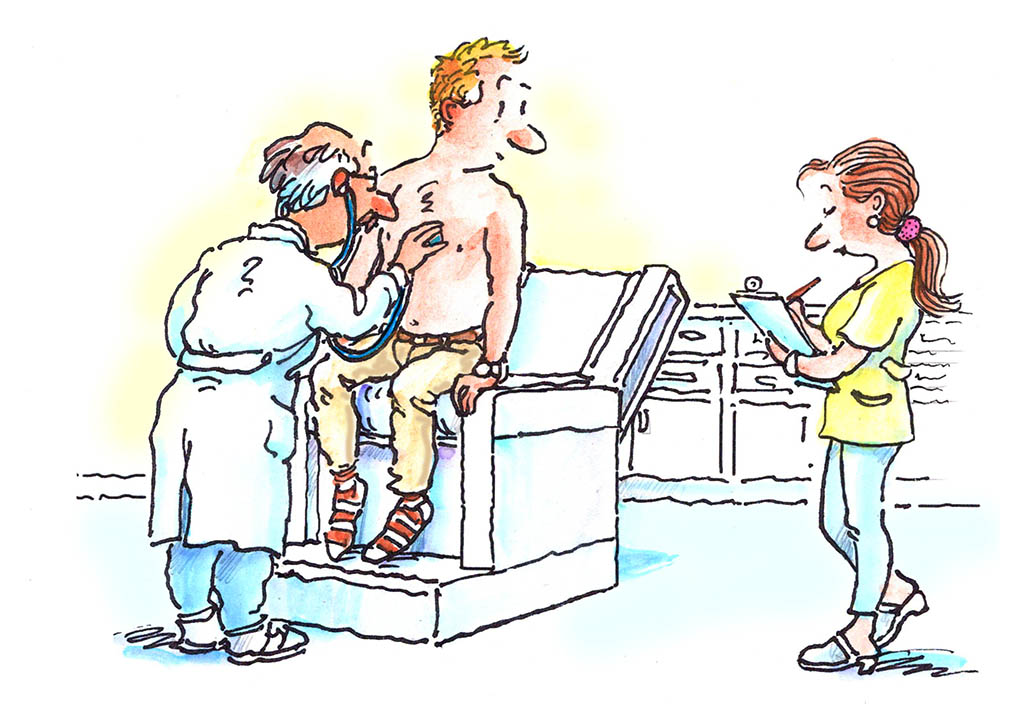Preparing for CAR T-cell therapy
There are several steps involved in CAR T-cell therapy:
- collecting your T-cells
- converting your T-cells into CAR T-cells at a special laboratory
- growing your CAR T-cells in the laboratory
- preparing your body for the CAR T-cells
- infusing the CAR T-cells into your body
- monitoring you for potential complications after treatment
Are you healthy enough for CAR T-cell therapy?
 Before collecting your T-cells, you will undergo a series of tests to confirm you are healthy enough for CAR T-cell therapy. These tests may include:
Before collecting your T-cells, you will undergo a series of tests to confirm you are healthy enough for CAR T-cell therapy. These tests may include:
- blood counts
- tests for infection
- pulmonary function tests to determine the health of your lungs
- echocardiogram to assess your heart’s health
- MRI to determine whether your disease has spread to the brain
- blood tests to assess kidney and liver function
- bone marrow tests
- CT or PET/CT imaging to determine where the disease is located in your body
- a biopsy to confirm your diagnosis
- a spinal tap to determine if your disease has spread to your central nervous system
Your Emotional Health
YWhen preparing for treatment, you will likely have a consultation with a mental health professional at the CAR T-cell center to discuss your emotional health and any concerns you have. He or she will also discuss why it is important for you to choose a family member or friend to serve as your caregiver.
You may be invited to attend a class for CAR T-cell recipients and caregivers to help you better understand what to expect during and after treatment.
BMT InfoNet's Caring Connection Program can connect you with others who have been through CAR T-cell therapy and can provide insights about what the experience was like.
How T-cells are Collected
The process used to collect your T-cells is called leukapheresis. The collection usually takes place in the outpatient setting and lasts four-to-six hours.
During your T-cell collection:
- You will sit in a comfortable chair or bed
- Blood will be withdrawn from your arm and passed through a machine that separates out your T-cells
- The rest of your blood product will be returned to you
- In some cases, patients need a central line inserted into their chest to collect sufficient cells.
The T-cells are then sent to a special laboratory where they are genetically modified and turned into CAR T-cells that can destroy your cancer cells.
CAR T-cell Therapy Preparation
It can take several weeks to create enough CAR T-cells for you. While your CAR T-cells are being made, your doctor may recommend that you have some chemotherapy or other therapy to prevent your disease from getting worse. This is called bridging therapy. Some patients are hospitalized for bridging therapy, while others receive it in the outpatient clinic.
CAR T-cell Infusion
A few days before your CAR T-cells are infused into you, you will receive chemotherapy to eliminate cells in your body that could prevent the CAR T-cells from multiplying. This step in the preparation process is called lymphodepletion and may cause:
- fatigue
- low blood counts
- nausea
- diarrhea
The infusion of CAR T-cells will take place in the hospital or in the outpatient clinic where you will be carefully monitored. You will be awake during the infusion. Your CAR T-cells will be returned to you much like a blood transfusion.
Depending on which CAR T-cell product you are receiving and whether complications or side effects develop after the infusion, you may need to be in the hospital for several days or weeks.
Next Page: Insurance and Financial Planning


